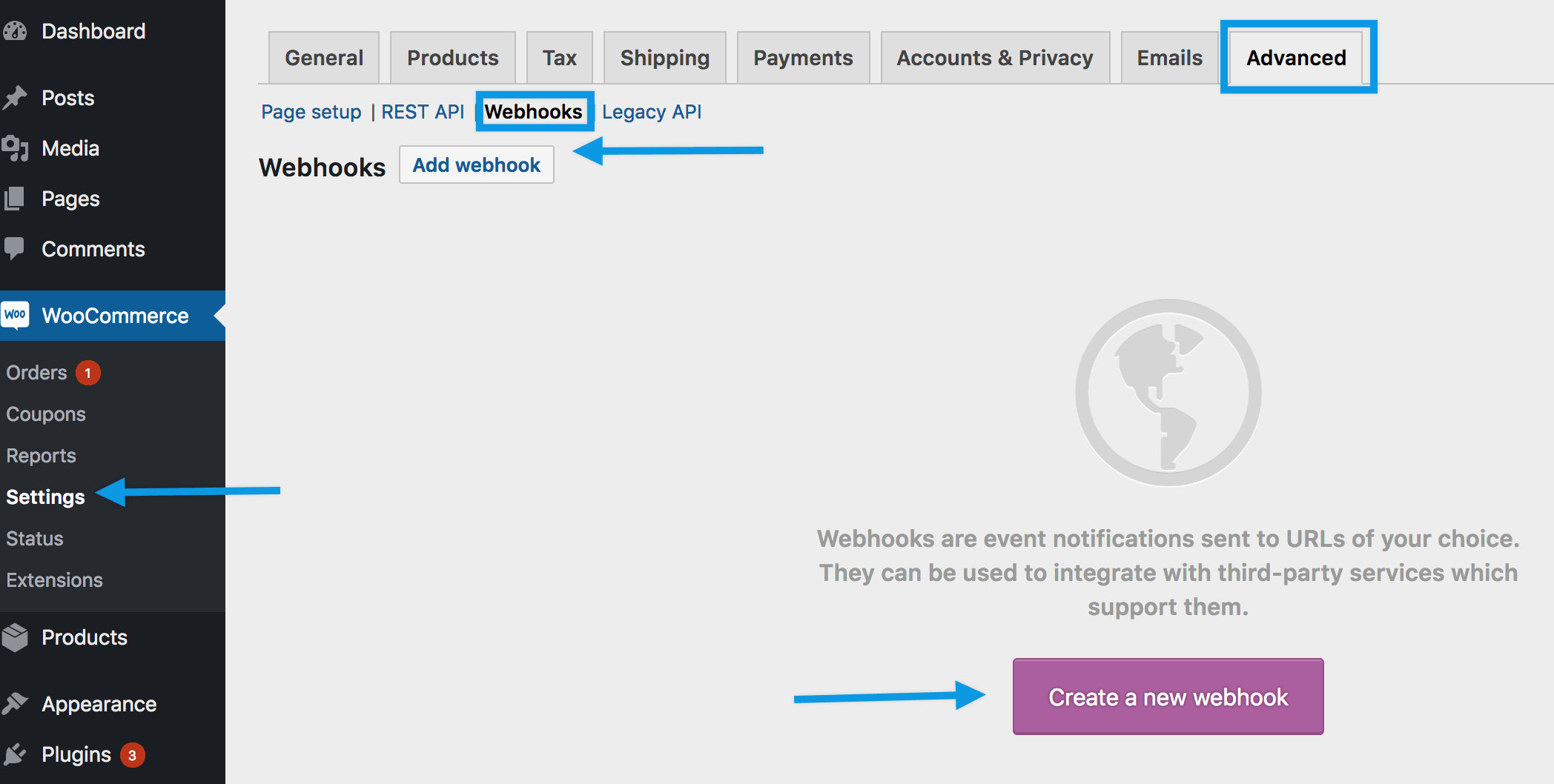68 lines
3.6 KiB
Markdown
68 lines
3.6 KiB
Markdown
---
|
|
post_title: Working with Webhooks in WooCommerce
|
|
menu_title: Using Webhooks
|
|
---
|
|
|
|
## What are Webhooks?
|
|
|
|
A [Webhook](http://en.wikipedia.org/wiki/Webhook) is an event notification sent to a URL of your choice. Users can configure them to trigger events on one site to invoke behavior on another.
|
|
|
|
Webhooks are useful for integrating with third-party services and other external API that support them.
|
|
|
|
## Webhooks in WooCommerce
|
|
|
|
Webhooks were introduced in WooCommerce 2.2 and can trigger events each time you add, edit or delete orders, products, coupons or customers.
|
|
|
|
It's also possible to use webhooks with WooCommerce actions, e.g., Create a webhook to be used every time a product is added to the shopping cart, using the action `woocommerce_add_to_cart`.
|
|
|
|
Webhooks also make it easier for third-party apps to integrate with WooCommerce.
|
|
|
|
## Creating webhooks
|
|
|
|

|
|
|
|
To create a new webhook:
|
|
|
|
1/ **Go to**: **WooCommerce > Settings > Advanced > Webhooks**.
|
|
> **Note:** Webhooks were formerly found under WooCommerce > Settings > API prior to WooCommerce 3.4.
|
|
|
|
2/ Select **Create a new webhook** (first incident) or **Add webhook**. The **Webhook Data** box appears.
|
|
|
|

|
|
|
|
3/ **Enter**.
|
|
|
|
- **Name**: The **name** is auto-generated as "Webhook created on [date and time of creation]" as a standard to facilitate creation. Change the name to something else.
|
|
- **Status**: Set to **Active** (delivers payload), **Paused** (does not deliver), or **Disabled** (does not deliver due delivery failures).
|
|
- **Topic**: Indicate when the webhook should be triggered - **Order Created**, **Product Deleted**, or **Customer Updated**. There are also **Action** and **Custom** options.
|
|
- **Action Event**: This option is available when the Topic is a WooCommerce **Action**, such as `woocommerce_add_to_cart` for when customers add products to the shopping cart.
|
|
- **Custom Topic**: This option is for **advanced users only**. It's possible to introduce new, customized topics with the help of `woocommerce_webhook_topic_hooks` filter.
|
|
- **Delivery URL**: URL where the webhook payload is delivered.
|
|
- **Secret**: The Secret Key generates a hash of the delivered webhook and is provided in the request headers. This defaults to the current API user's consumer secret, if nothing is entered.
|
|
|
|
4/ **Save Webhook**.
|
|
|
|
> **Note**: The first time your webhook is saved with the Activated status, it sends a ping to the Delivery URL.
|
|
|
|
Webhooks are disabled after 5 retries by default if the delivery URL returns an unsuccessful status such as `404` or `5xx`. Successful responses are `2xx`, `301` or `302`.
|
|
|
|
To increase the number of retries, you can use the `woocommerce_max_webhook_delivery_failures` filter function.
|
|
|
|
## Editing and deleting webhooks
|
|
|
|
Webhooks are listed the same way as posts or products.
|
|
|
|
1. Find the webhook you wish to alter.
|
|
2. Hover over the name, and **Edit** and **Delete permanently** options appear.
|
|
3. **Delete**, or make **Edits** and **Save changes**. Bulk deletion is also possible with the dropdown.
|
|
|
|

|
|
|
|
## Webhook logs
|
|
|
|
WooCommerce saves logs of all events triggering a webhook. Webhook logs are found at: **WooCommerce > Status > Logs**.
|
|
|
|

|
|
|
|
Logs may be reviewed to see delivery and response from the server, making it simpler to integrate and debug.
|